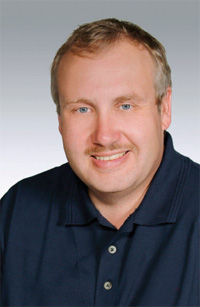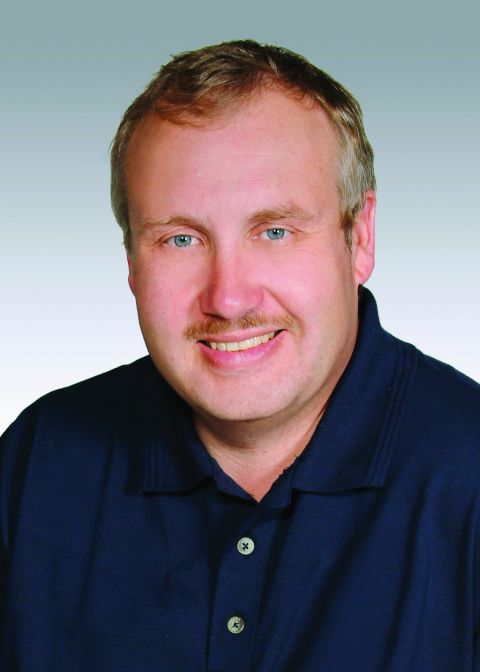SBE's Ennes Workshop a Pre-NAB Ritual for Broadcast Engineers
LAS VEGAS: In 1973, a young Jim Kutzner showed up at the door of KTCA-TV, St. Paul, Minn.'s PBS member station, looking for any way into the TV business he could, because, well, Jim liked TV. Sweeping floors, manning the fund-raising phones … anything. And that's where things went in one of those very strange directions that seem to happen so often in broadcasting; the conversation turned into an interview, and the willing volunteer came back with a real job offer.
On Saturday, April 14, at the Ennes Workshop, an all-day, educational program at the NAB Show, Jim will be the closing presenter, covering the future of TV. In 2010, the Advanced Television Systems Committee (ATSC) established a planning team to explore a next generation broadcast television system, and that was followed by a new Technology Group 3 ("TG3") to develop "ATSC 3.0." The world of the original digital television standard has changed, and technology has moved forward to the point where at some point, a replacement of the ATSC A/53 standard will most likely be desirable.

Fred BaumgartnerCONNECTING THE DOTS
So how do those dots connect? By the time Jim left KTCA/KTCI-TV, he was the chief engineer and had moved and rebuilt the station, spent some time with a distributed major in broadcasting at Gustavus Adolphus, and became immersed in math and physics at Hamline University, leading to a bachelor's in electrical engineering from the University of Minnesota. He'd go on to George Washington University and a master's in engineering management.
Over the years, Jim would move back and forth between our nation's capital and the Twin Cities, first in 1990, managing the PBS engineering laboratory, then back to KTCA/KTCI in 1993 as the vice president of operations and engineering. From there, Jim went on to become director of engineering for Comark Digital Services—Thomcast Communications, and back to PBS eventually and currently taking the role of senior director of advanced technology for PBS. And he's back to living near Minneapolis.
A big part of all this is his role as a member of the ATSC board and chair of Technology Group 3; addressing the next generation of television. He is also vice-chair of the Open Mobile Video Coalition Technology Advisory Group.
But ATSC 3.0 isn't the only topic of consideration at this year's Ennes/SBE and PBS program at the NAB Show. For those of you who have attended before, you know that the Saturday before the NAB Show floor opens, the continent's largest single gathering of broadcast engineers takes place in the South Hall of the Las Vegas Convention Center. The 17th annual program answers the question: "what is it that broadcast engineers most need to know this year?" It's a special program, largely because we invite presenters, mostly the engineers and developers who can look under the hood and explain the unexplainable.
I've had the honor of working with this program for most of its history. I honestly think this is the most interesting program we've done, not because we did a better job, but because in an industry that changes quickly and deeply, there are so many deep changes in progress.
RISE & SHINE

Jim Kutzner, senior director of advanced technology, PBS As usual, we open with a tutorial, but an unusual one. As networking became an important element in broadcasting, you'll recall that twice, this program found Terry Baun, CPBE, teaching a day-long networking fundamentals class. Over time, post secondary schools offered networking classes in a longer format and more depth than a few hours or even a day can cover. Our educational emphasis has shifted to those pieces of IP technology that are unique to broadcast. You might recall Skip Pizzi's tutorial on audio over IP, as well as tutorials on broadcast IP network design, security, media management, IP workflows, etc.
This year, Wayne Pecena, who has taught his fair share of survey courses on IP, and IPv6 conversion, etc. (many available as SBE webinars), takes the topic up a notch in doing a tutorial on the management of IP and your career. The objective is to learn where you and your staff are in your IT proficiency trajectory, cover all the bits and pieces of IT with enough depth to judge what is important, what skills you need personally, what skills you need in your team, and how to most efficiently and effectively get there. This is a big objective on a level above where we have been able to offer a tutorial before. Wayne is the director of engineering, Educational Services at Texas A&M. If you have ever been a student, or taken in one of his presentations, you know that Wayne is uniquely qualified and a rather engaging speaker, well worth the early rise and shine 8:00 a.m. start time.
From there, we take a little "breath mint" with Jerry Whitaker looking at the "tube sound" fact or fiction. It turns out that question isn't so easy to answer: the deeper you dig, the more you see that the architecture of amplifiers changed to accommodate solid state, so what you might think you know about transfer functions and the like isn't at all the whole story. It might just be that there are places, even in broadcasting, where electron valves provide a significant advantage.
CLOUD & IP CONSIDERATIONS

SBE's Ennes Workshop will take place in the South Hall of the LVCC 8 a.m. to 5 p.m., Saturday, April 14. What is "the cloud," what has moved there, and what broadcasting functions will eventually be candidates to enter the cloud is the topic of a tutorial that covers everything from hypervisors and VM-ware, to latency, and the financial implications, security, and reliability of the cloud. Leading the tutorial is Rich Folio, the director of Harris Cyber Integrated Solutions, Stan Moote, the chief technology officer at Harris, and Al Kovalick, the quintessential technical strategist. Add Katsushi Yamashita of IBM's/Fuji TV cutting-edge cloud implementation and Greg Lennon's case study of Chyron's cloud services and we have a rather intense couple of hours on a critical topic.
You might have noticed that IPTV in particular, and advances in file-based and IP workflows have driven a series of standards, especially SMPTE standards. This is one of those years where we need SMPTE Director of Standards and Engineering Peter Symes to bring us up to speed.
You might remember Qualcomm's Kent Walker from General Instruments and the digital TV revolution, or maybe from MediaFLO. Kent is vice president of technology at Qualcomm, and works at the intersection of broadcast and wireless telecom air interfaces. In LTE, there is a provision for evolved Multimedia Broadcast Multicast Service (eMBMS). Is this opportunity or enemy, and how does it work? eMBMS was not on our radar a year ago… it is now.
IPTV, OTT (Over The Top), connected TVs, "devices" and many variants of IPTV distribution continue to grow in importance at an ever increasing pace. As so often has happened in the past, the leading technical edge is dominated by PBS. We've asked PBS CTO John McCoskey, along with other his PBS colleagues Eric Wolf, executive, technology strategy and planning, Wendy Allen, vice president of media operations and engineering, and Steve Scheel, senior director of media operations to tell us everything they know.
Then something we have to stay on top of—the ever evolving world of broadcast workflow. John Footen and Ben Ropke of Cognizant bring us up to date with a refresher on SOA, FIMS, SaaS, PaaS and where the process of virtualization of broadcast currently is.
We end the day, and the Ennes/SBE/PBS TechCon program this year, with Jim Kutzner and the future of ATSC. The full Ennes Workshop schedule is available on the SBE Web site. Attendance at the workshop requires a full NAB or PBS TechCon registration. Non-NAB members, who are members of the SBE, can receive a partner discount and can access the code at www.sbe.org.
The professional video industry's #1 source for news, trends and product and tech information. Sign up below.
Fred Baumgartner, K0FMB earned his first-class FCC license and got his first broadcast jobs before a driver’s license. He recently retired from Sinclair Broadcasting where he was Director of NextGen Broadcast Implementation. He had also been a Director of Engineering with Qualcomm’s MediaFLO project, enabling TV on cell phones. His long career included Comcast, AT&T, Harris Broadcast, and several Chief Engineer roles at TV and Radio Stations. He was also a key developer of EAS and was TFT’s product manager for the first generation of EAS equipment. Fred is well known in Society of Broadcast Engineering circles for his involvement in education.

